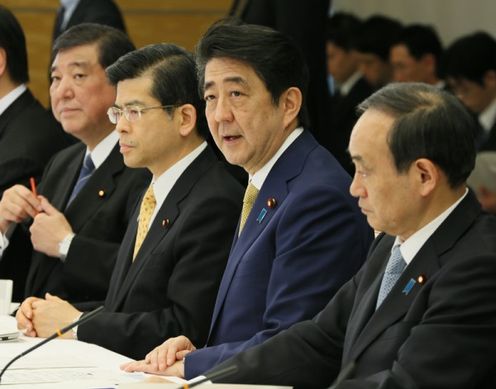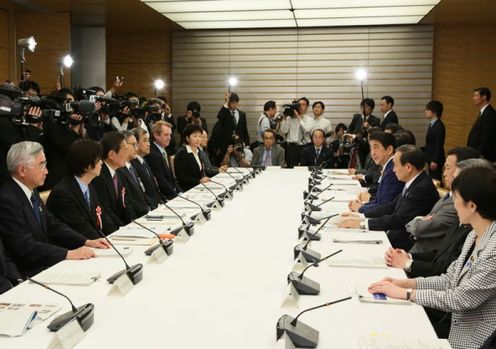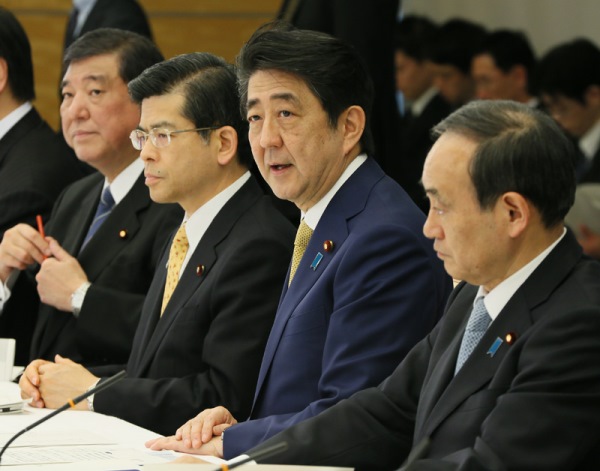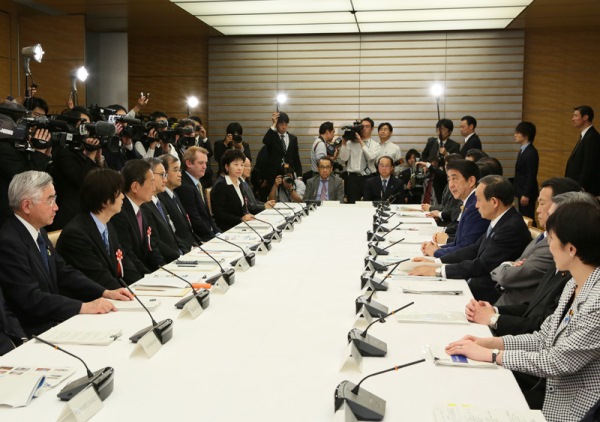Home > News > The Prime Minister in Action > March 2016 > Meeting of the Council for the Development of a Tourism Vision to Support the Future of Japan
The Prime Minister in Action
Meeting of the Council for the Development of a Tourism Vision to Support the Future of Japan
March 30, 2016

Photograph of the Prime Minister making a statement (1)

Photograph of the Prime Minister making a statement (2)
[Provisional Translation]
Prime Minister Shinzo Abe held the second meeting of the “Council for the Development of a Tourism Vision to Support the Future of Japan” at the Prime Minister's Office.
During the meeting, after a discussion on the draft “Tourism Vision to Support the Future of Japan,” the members exchanged views.
Based on the discussion, the Prime Minister said,
“Tourism is one of the major pillars of the growth strategy of Japan. It is also the trump card for regional vitalization, as well as the engine for growth towards achieving a GDP of 600 trillion yen.
At today’s meeting, we have heard many bold yet practical views from the private-sector members. As well as all of the relevant parties gaining a deeper understanding of the significance of tourism, the awareness of the government has also undergone a major transformation.
Today, towards the next stage, we have determined the ‘Tourism Vision to Support the Future of Japan,’ which includes many policies at once ambitious and concrete. This is truly thanks to the private-sector members, and I would like to express my sincere gratitude to you all.
We will boldly open appealing governmental facilities for public viewing such as the Akasaka Palace State Guest House and the Kyoto State Guest House, to act as a spark for tourism. ‘Japan’s national parks,’ where abundant nature is concentrated, will be reborn as ‘national parks’ of a world standard.
Moreover, aiming to create a ‘Japan the world will want to visit,’ we will steadily implement the ‘ten reforms’ decided today, and by doing so, the Government as a whole will work to realize new heights for Japan as a ‘tourism-oriented developed nation.’
Towards the Tokyo Olympic and Paralympic Games, which will be held four short years from now, and focusing also on the post-Olympic future, we will tackle the challenge of new goals.
We aim to increase the number of foreign tourists to Japan to 40 million by 2020, and to 60 million by 2030.
Also, with the key words of ‘regions’ and ‘consumption,’ we will pursue high quality, and set goals such as increasing the amount of money spent by foreign tourists to Japan to 8 trillion yen by 2020, and the number of foreign tourists staying overnight in regional areas to 70 million by 2020, thus building tourism into a key industry.
In regard to the goals of 40 million foreign tourists by 2020, and 60 million by 2030, from tomorrow there may be some criticisms of this. However, on the occasion when we set the goal of 10 million foreign tourists, when I was Deputy Chief Cabinet Secretary, some said that this was impossible. Moreover, after the Abe Cabinet was established, it was also said that it would be difficult to achieve 20 million foreign tourists by 2020, but that goal has been easily achieved well in advance of 2020. Thus, both goals have been realized. In large part due to your efforts, both the government and society have undergone major changes. Things now happen very quickly, and I would like to take advantage of this acceleration to achieve these goals.
Under the policy of ‘doing everything that the Government can possibly do,’ and towards building a new Japan that is a ‘tourism-oriented developed nation ,’ I am determined that the Government will stand at the forefront and always proactively make the first move to take all possible measures to achieve our goals. Thank you very much.”


